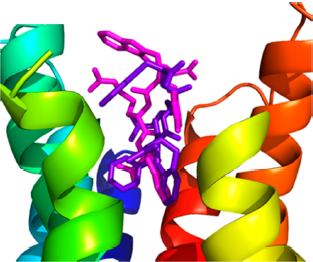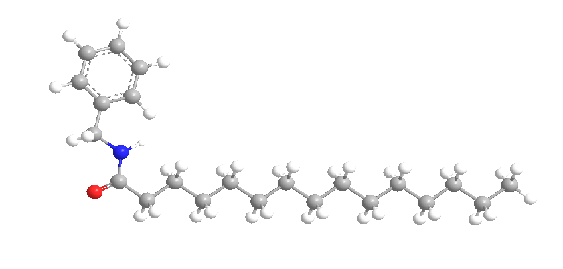
Research > GPCRs
β2 adrenergic receptor peptidomimetic ligands
 Nanobodies
(NBs) are single monomeric variable domains of camelid heavy-chain-only
antibodies, naturally produced in camelids. These variable heavy chain
domains (VHH) maintain full antigen binding capacity. They have a wide
variety of uses in research and diagnostics, in particular, they can be
utilized as crytallographc chaperons for studying the structure of
GPCRs by rigidifying flexible regions and obscuring aggregative
surfaces.
Nanobodies
(NBs) are single monomeric variable domains of camelid heavy-chain-only
antibodies, naturally produced in camelids. These variable heavy chain
domains (VHH) maintain full antigen binding capacity. They have a wide
variety of uses in research and diagnostics, in particular, they can be
utilized as crytallographc chaperons for studying the structure of
GPCRs by rigidifying flexible regions and obscuring aggregative
surfaces. The X-ray crystal structures of NB-stabilized β2-adrenergic receptor (β2AR) have been reported in the lab of Prof. Jan Steyaert, VIB, Belgium. NB80 in particular is able to bind the intracellular G protein binding site of β2AR and stabilize the receptors in an active conformation. A set of peptides mimicking the complementarity-determining region 3 (CDR3) loop in NB80 mimetics were synthesized and evaluated for activty in collaboration with Prof. Steven Ballet, VUB, Belgium. We studied the conformation of the peptidomimetics to evaluate/assess their tendency to adopt β-hairpin structures observed in the X ray structure of the GPCR binding region of NB80.
Peptide agonist and antagonists of Melanocortin receptors
 Melanocortin
receptors play a role in a wide range of biological and physiological
responses such as feeding and learning behavior, sexual function and
energy homeostasis. I was involved in a study aiming at the design
potent and more selective peptide melanocortin peptide ligands together
with Prof. Steven Ballet, VUB, Belgium. I performed modeling
investigations on conformationally restrained tetrapeptide ligands with
agonist and antagonist activities against human Melanocortin receptors
(hMCr). I described the solution structures using NMR spectroscopy and
carried out docking studies of the ligands to hMCr4 in order to help
understanding their biological activities.
Melanocortin
receptors play a role in a wide range of biological and physiological
responses such as feeding and learning behavior, sexual function and
energy homeostasis. I was involved in a study aiming at the design
potent and more selective peptide melanocortin peptide ligands together
with Prof. Steven Ballet, VUB, Belgium. I performed modeling
investigations on conformationally restrained tetrapeptide ligands with
agonist and antagonist activities against human Melanocortin receptors
(hMCr). I described the solution structures using NMR spectroscopy and
carried out docking studies of the ligands to hMCr4 in order to help
understanding their biological activities.GPCR agonist and antagonist of plant origin: Macamides
 Macamides
are secondary metabolites of Maca (Lepidium meyenii walp.), a
herbaceous plant cultivated mainly in the central Andes. The macamides
are amides of saturated and polyunsaturated fatty acids which are not
found in other plants. The root of the Maca plant is a staple food for
the indigenous peoples of this arid zone growing in the wild even at
high latitudes and also used in traditional medicine for treating
various illnesses. Due to the fact that the plant is associated to
energizing properties and positive effects on the human sexual drive,
it is also cultivated industrially in Peru. Its various
etnopharmacological effects were shown to be linked to effects on
G-protein-coupled receptors of the Endogenous Cannabinoid System.
Macamides
are secondary metabolites of Maca (Lepidium meyenii walp.), a
herbaceous plant cultivated mainly in the central Andes. The macamides
are amides of saturated and polyunsaturated fatty acids which are not
found in other plants. The root of the Maca plant is a staple food for
the indigenous peoples of this arid zone growing in the wild even at
high latitudes and also used in traditional medicine for treating
various illnesses. Due to the fact that the plant is associated to
energizing properties and positive effects on the human sexual drive,
it is also cultivated industrially in Peru. Its various
etnopharmacological effects were shown to be linked to effects on
G-protein-coupled receptors of the Endogenous Cannabinoid System.I am working together on this topic with Fernando Chain, who has isolated, characterised and synthetised various macamides during his PhD thesis in Tucuman University in Argentina. We have conducted a study on the metabolic fingerprinting of wild type and commercial Maca powder products.